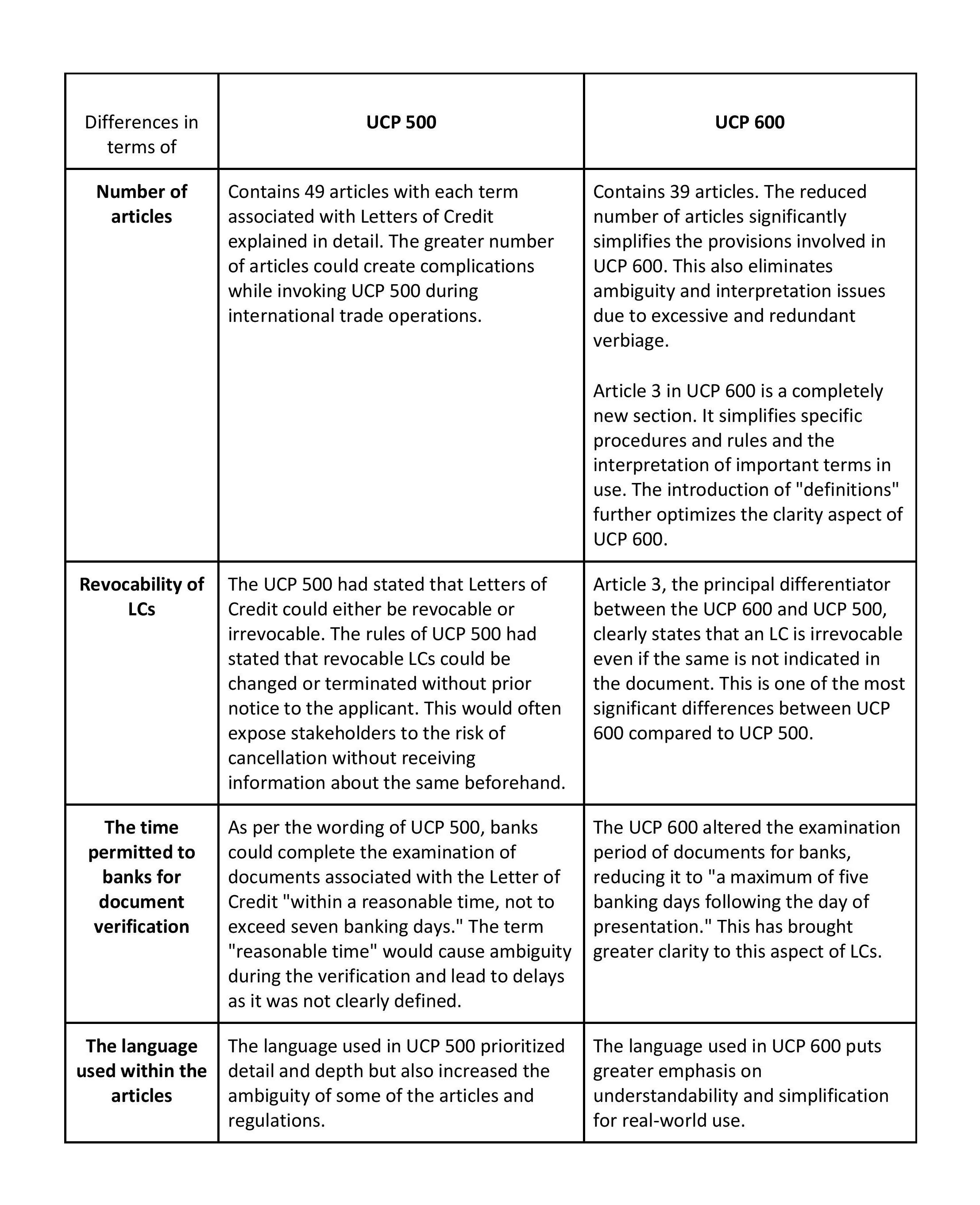The Uniform Customs and Practice for Documentary Credits, also known as UCP 600, is a set of rules established by the International Chamber of Commerce (ICC) that governs how documentary credits are issued and used worldwide.
The ICC and UCP play a crucial role in facilitating international trade by setting rules and standards to ensure smooth and fair trade transactions. They help reduce or eliminate trade dispute risks by providing certainty and predictability. Not to mention, the two also promote world trade, thus contributing to economic growth and development.
What is UCP 600
UCP 600 came into force on 1st July 2007 after replacing UCP 500, published in 1993. The primary changes made in UCP 600 include stricter requirements for document presentation, a reduction in the types of acceptable documents, and new rules relating to e-commerce. UCP 600 provides greater clarity and certainty for all parties involved in documentary credit transactions.
Differences between UCP 600 & UCP 500
Some of the key differences between UCP 500 and UCP 600 include:

Also Read: Irrevocable Letter of Credit | What is it & How does it work
What’s the purpose of UCP 600
The purpose of UCP 600 is to guide how banks should issue and process LCs. The rules are designed to promote uniformity and predictability in the documentary credit process, thereby reducing the risk of misunderstanding and potential disputes between banks and their customers. Moreover, UCP 600 is an essential tool for businesses engaged in international trade, ensuring that payments occur promptly and smoothly and the transactions are de-risked. A decision was taken in July 2017 not to revise UCP 600. However, the ICC stressed the need for modifying UCP 600, indicating that the next round of UCP is probably around the corner.
What is Electronic UCP (eUCP)?
eUCP provides a standardized framework for electronic communications in documentary credit transactions. The objective of eUCP is to incorporate electronic media into the UCP with minimal change to well-established laws and practices. To this end, eUCP builds on the foundation provided by UCP 600, considering technological developments and new types of documentary credits such as standby LCs. eUCP also guides in interpreting UCP 600 in an electronic context. As a result, eUCP offers a comprehensive and up-to-date approach to using electronic communications in documentary credit transactions.
How is UCP600 beneficial for trade transactions?
The key benefits of UCP 600 are:
- Improved clarity and uniformity in the interpretation of LCs.
- Reduced chances of LCs being rejected due to strict compliance requirements.
- Shortened timelines for the issuance and acceptance of LCs.
- Reduced costs associated with managing LC transactions.
FAQs on UCP 600
1. How often is UCP revised? There are no fixed intervals for the revision of UCPs. The first UCP was published in 1933 and has been updated five times since then up until the latest UCP 600, which came into effect on 1st July 2007.
2. How many articles are there in UCP? The latest version of UCP 600 comprises 39 articles.
__3. When will the next UCP be issued? __ A decision was taken in July 2017 not to revise UCP 600. However, the ICC stressed a need to revise UCP 600, indicating that the next round of UCP is probably around the corner.



